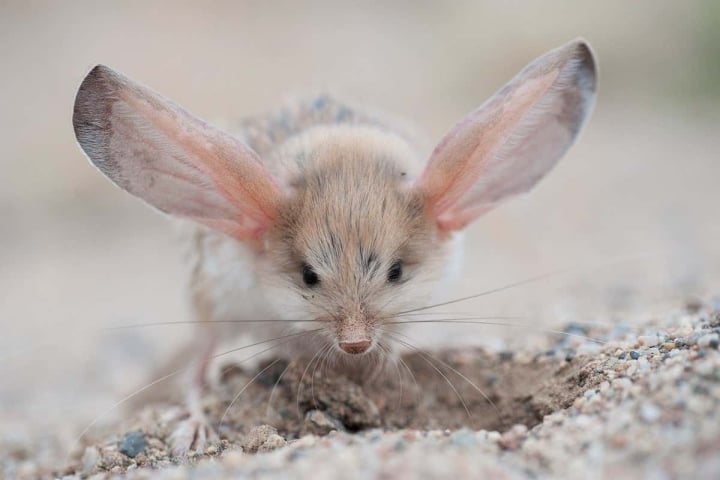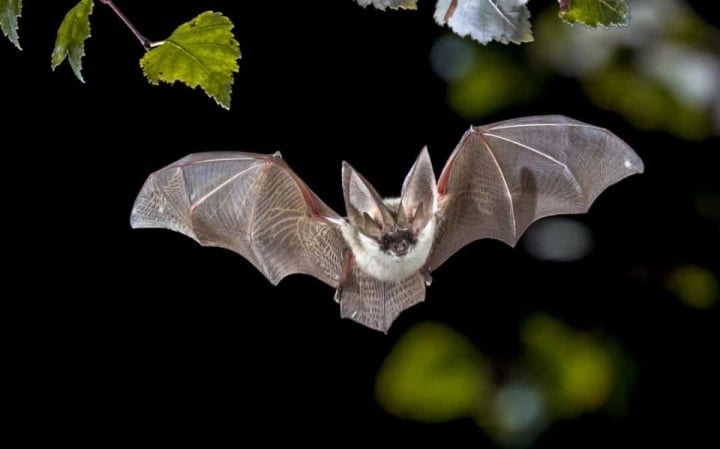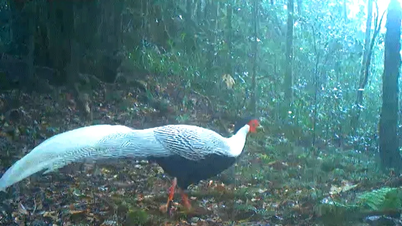Each animal species will possess its own special survival skills to protect itself from enemy attacks. The animals that possess the largest ears in the world are the same, in addition to using their ears to listen to the situation, they also use them to cool their bodies through many blood vessels.
Jerboa
Jerboa mice originate from the deserts of southern Mongolia and northwestern China. The common characteristics of this animal are that it has quite large ears compared to its body size and lives underground during the day. At night, Jerboa mice will crawl to the ground to look for food and drink night dew.
This jerboa looks like a kangaroo. Both have long hind legs, very short front legs, and long tails. Jerboas move by hopping like a kangaroo. The tail of a jerboa can be longer than its head and body.

Jerboas have ears that are larger than their body size.
African elephant
The African elephant is one of the largest animals on Earth and is distinguished from the Asian elephant by its large ears. In the summer, to reduce body temperature, African elephants will suck up water and spray it on themselves. At the same time, they also use their ears to splash water on their bodies.
The African elephant's nose (trunk) is used for breathing, smelling, collecting water, and grabbing objects. However, this species of elephant cannot use its toes to grab small objects. Meanwhile, Asian elephants can do this action.
Big Eared Rabbit
There are six species of giant rabbits, some with ears up to 18cm long, and they live in cold climates. They are usually non-migratory and hibernate during the winter. Their varied diet includes shrubs, small trees, grasses and herbs.
Because big-eared rabbits often carry many disease-carrying animals such as fleas, ticks, and lice, very few people want to hunt them.
Bat
Bats are the only mammals that can fly. Some other animals such as flying foxes and flying squirrels appear to fly, but they can only glide for a limited distance.
This animal has huge ears, which can hear the smallest sounds such as the footsteps of insects. From there, it can easily detect and destroy prey. However, bat ears are not related to echolocation when encountering prey as many people still mistakenly believe.

Bats' ears can hear even the smallest sounds.
Carcal
The Carcal is a long-legged wildcat that lives in forests from Africa to India. It is known for its large ears and its incredible hearing, allowing it to locate its prey even in tall grass. While hunting, the Carcal's ears move like an antenna.
Fennec fox
Fennec foxes are affectionately given another name by the indigenous people, the “bat-eared” fox, and usually live in eastern and southern Africa. They have a special preference for eating insects, small mammals and some birds.
In addition, the giant ears help the Fennec fox to dispel the heat of summer and detect insects hiding in the sand. Fennec fur is highly valued by the indigenous people of North Africa and in some parts of the world, this fox is considered an exotic pet.
Tuyet Anh (Source: Synthesis)
Useful
Emotion
Creative
Unique
Wrath
Source




































































































Comment (0)